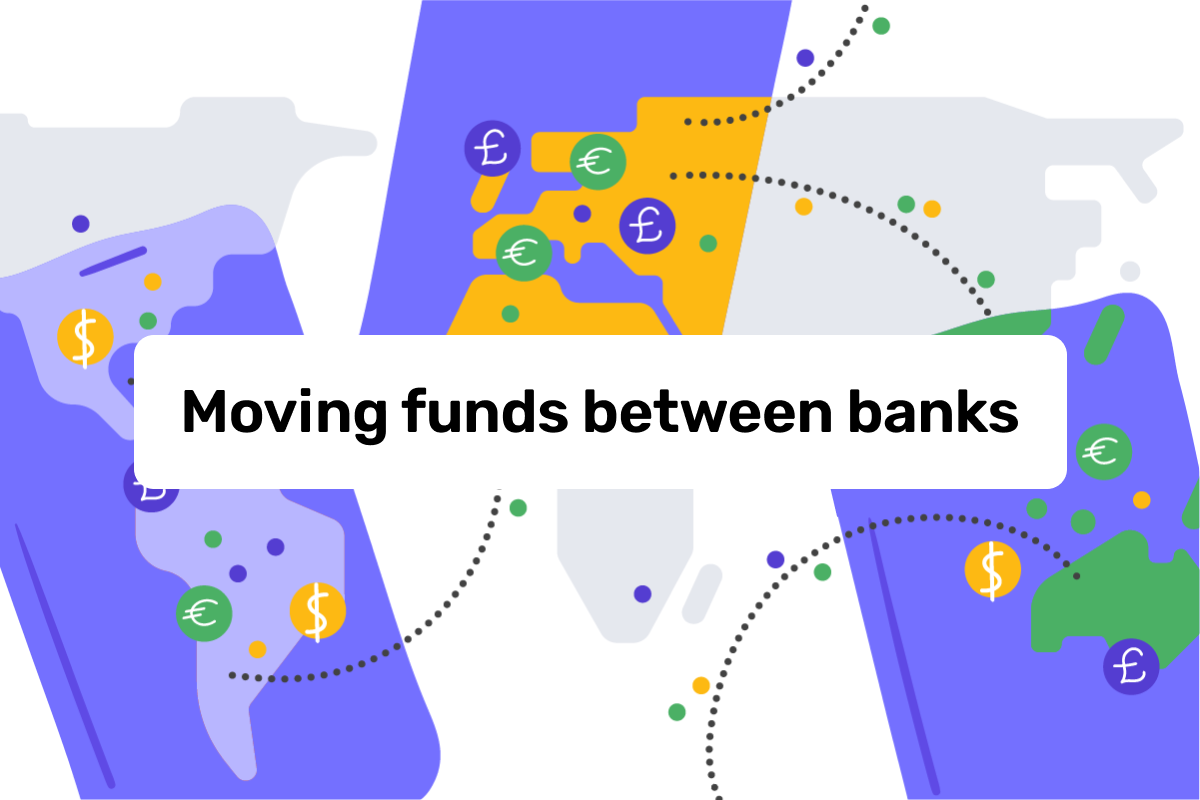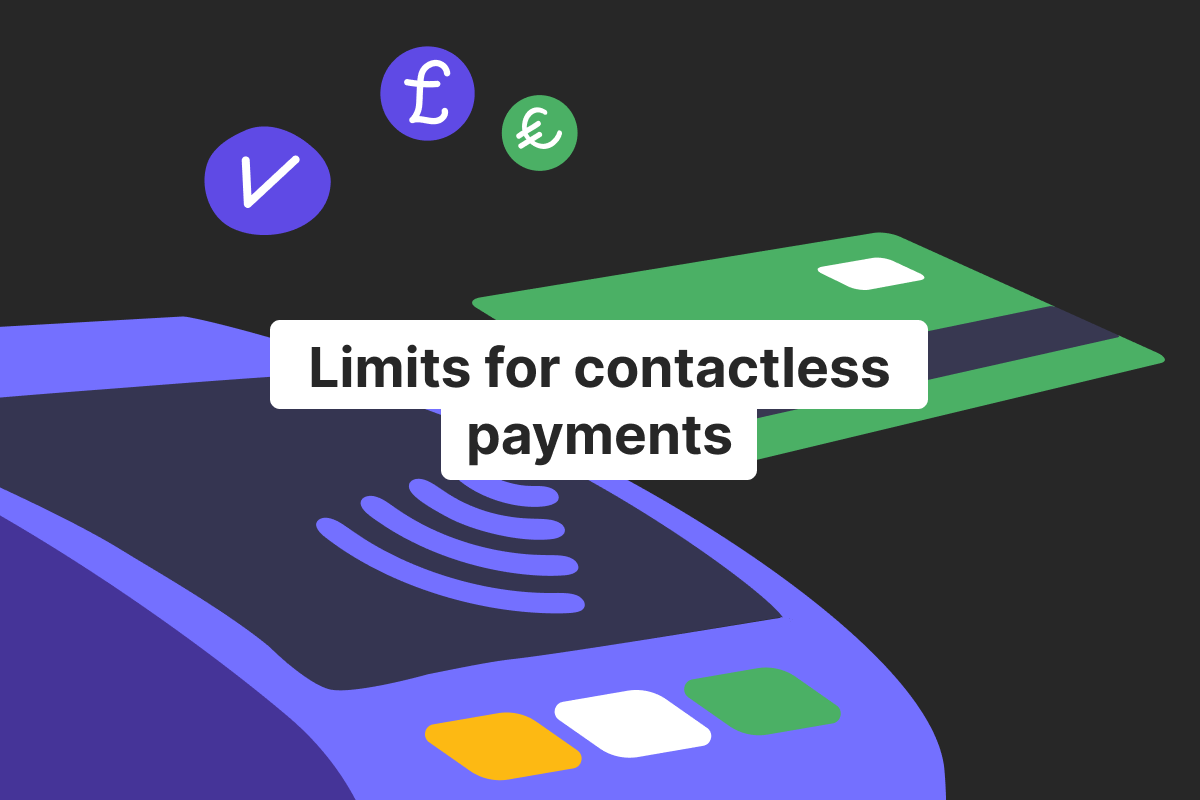Of course, it’s best to choose one reliable financial provider to manage your finances over an extended period. However, it often happens that we need to send money between providers. It may seem like a burden to move all your funds to another bank at once or within a short given time. In addition, the pressure of making a mistake with the necessary details and losing all your savings is always there, especially if you’re in a hurry.
But don’t worry, the reality of transferring money from one bank to another is much less scary than you can imagine. Indeed, there are plenty of ways to make this process smooth, convenient, and painless even for those who are not well-familiar with modern banking.
Our today’s blog post is dedicated to all the methods of sending your savings between accounts. We will tell and teach you all about moving funds with the help of different tools so that you can opt for the one that will work best for you. Let’s go!
Bank-to-bank transfer
This way of transferring money from one bank to another has proven to be the simplest one. In case you’re changing providers or moving funds between current and savings accounts with different issuers, this is an easy and fast option.
Below, we will describe in detail bank-to-bank transactions and how to make them.
How bank-to-bank transfers work
These financial operations are faster than regular wire transfers thanks to the developed banking network within one country. In the US, bank-to-bank transactions are processed via the ACH (Automated Clearing House), while in the UK, it’s the CHAPS (Clearing House Automated Payments System). They do not cost much compared to wire transfers but still take a few business days.
How to set up a bank-to-bank transfer
For this, you should link the necessary accounts. This can be done both from a mobile banking app or a web application. Follow the steps below:
Find an option “link accounts” in the menu
Enter account details
Depending on the country and type of payment, it can be IBAN, SWIFT/BIC codes, routing number, etc.
Verify that you’re an owner of the second account
Here you may need to fill in the username and password for your second account. Another way of verification can be instructing a small transaction between the accounts. After this, the first bank should approve that the two accounts are connected within a few working days.
Now, you’re all set up and can start the transition. For this, choose two linked accounts and enter the amount you want to send. You can make one transaction or several, it all depends on your timeframes and the sum you need to move around. Finally, confirm the operation and wait for the notification that the payment has been ordered.
You can instruct both one-time and recurring payments (direct debits or standing orders). Some banks offer to move all your payments from a previous account with another issuer to a new one with them. It means that you don’t need to order all these payments and enter all the details twice. Just provide them with the necessary information in advance – the transition may take even a week.
Transfer money with a bank app
Before, we mentioned how to transfer money to another bank account via linking two accounts in both mobile and web applications.
You can also make regular wires using online banking. If you have a mobile application, log into it and go to the tab “Transfers”. Hit the button “Create” or “New”, enter the details, and confirm the transaction. Some providers will offer to send a confirmation document to email straight away and outline the approximate deadline for the funds to settle in.
Remember that some issuers demand adding the receiver’s details before instructing a payment. It can be done in the “Beneficiaries” tab.
Transfer fees
The charges are based on many factors, including pricing, the type of transfer you’re sending, the country, and so on. The best practice is to check on fees with your provider beforehand.
We’ve prepared a few tips to remember when sending funds:
Domestic transactions (within one country) are cheaper and faster than international ones
Fees for sending funds overseas may reach even $50
If you connect two accounts to move funds between them, the charges should be lower than with a regular wire payment
Don’t make urgent transactions (unless you really need to). The fees for faster processing are higher
If possible, look for providers or platforms that have no charges for sending a transaction
Check daily limits – you might need to pay extra if you go over the limit
As you can see, there are plenty of things to pay attention to when sending funds from one account to another. Let’s now proceed to other ways of doing so.
Alternatives to bank transfers
Bank transfers are not the only option to move funds around. Apart from passing cash from hand to hand (or from one account to another), there are a few other ways to do this electronically. Your choice of available tools, to a great extent, changes with every country. Some of them have developed banking networks and a large choice of money transfer companies, accordingly. At the same time, some countries have only started implementing digital technologies into their financial systems. Thus, they might not be able to present a vast range of financial services to choose from.
The most popular methods to send funds are the following:
P2P payment apps to transfer money
These are various tools to simplify the process of sending money. P2P stands for Person to Person payments and encompasses transactions between accounts, digital wallets, bank cards, etc. The range of available payment options is different with each P2P tool. We will now discuss a few examples of P2P services:
PayPal
Is a giant in the payment sphere and one of the first services that offered digital wallets. Like most P2P tools, PayPal can be used via both mobile and web applications. It also works as a digital wallet, which means that you can link any card or account to it and send/receive funds to and from other PayPal users. It supports 25 currencies and is available almost in all countries. PayPal fees differ depending on the currency, region, and the sum you’re sending.
During the past decade, more and more P2P services are taking over the world of finances. You might have heard about similar tools such as Venmo, Google Pay, and Apple Pay Cash. To tell the truth, there’s no one universal P2P service that will be perfect for numerous countries and different users. Nevertheless, they can often be pretty fast and even cost-effective due to low fees if compared to regular transfers, especially if we’re talking about overseas transactions.
With Genome, for instance, you can send instant and free of charge payments in different currencies within the Genome network. Open a business or personal wallet with us in no time and enjoy all the benefits of multi-currency accounts.
Using checks
Checks are mostly spread in the USA and are quite rare in other countries. You can receive or purchase a checkbook as soon as you open a checking account in the US. To put it simply, a check is a physical representation of electronic payment. Just like you’re filling in the information for instructing a transaction in a mobile app, you should also enter the details when signing a check. Then, the recipient can deposit the funds in their account – they only need to pass the check to their financial provider. Your balance decreases – and the corresponding sum is placed in the recipient’s account. The receiver can also exchange the check for cash.
Send money using a money order or cashier’s check
Now, it’s time to get to know more about types of paper payments that are less common than regular checks. They can be divided into 2 categories:
Cashier’s check
Cashier’s checks are one more way to move funds around. They work similarly to regular checks but are issued by the bank. As a result, the funds are taken from their balance, and the cashier or teller signs the check, while with regular checks, a person should put their signature.
Cashier’s checks are most often used for large amounts, such as car or property purchases. To get such a check, you should come to the branch or request the document online (if possible). You need the recipient’s details, as well as your ID to obtain a cashier’s check. If you’re a bank’s client, the necessary amount will be withdrawn from your account with this provider. Otherwise, you will need to send money or have enough cash to cover the amount of the cashier’s check.
Banks and credit unions usually charge a small fee for issuing cashier’s checks. If you’re submitting information online or via phone/email, the provider will then mail the check to the recipient. If you’re doing this in a branch, you can pick up the check right after it has been issued.
Money order
This is another form of paper payment issued by credit unions, post offices, etc. Money orders are used for small sums because they’re limited (usually up to $1000). When you’re purchasing such a document, you should pay immediately. For this, you can’t use a credit card. The rest is pretty much the same – the recipient can deposit a money order in their account or receive cash. Moreover, one can use them to pay for purchases.
FAQ
How long does it take to transfer money between banks?
The timeframes depend on how exactly you will be moving the funds and what service you will use. With regular transactions, this process can take a few business days. Remember that international payments will take longer than domestic ones. However, some issuers and financial providers offer faster payment processing for an extra fee. For example, instead of sending a SEPA credit transfer, you can go for a SCT Inst that takes a maximum of 10 seconds.
Some P2P services also provide almost instant payment processing, especially if these are transactions between digital wallets or cards.
What is the fastest way to transfer money from one bank to another?
As it was already mentioned before, the timeframes vary depending on what method of sending money between the issuers you’ve chosen. One of the most reliable ways is to link two accounts. However, this process can even last for a week because the providers have to verify the connection. Only after this, they will process the operation and move funds.
If you’re looking to make a rapid transaction, you can explore the offers of P2P payment tools and see if any of them can satisfy your requirements when it comes to fees and timing.
Can I transfer money from one bank to another from my smartphone?
Yes, and, in fact, you can do this in a few ways. First of all, you can use the mobile app from your provider to order a regular transfer. Secondly, you can use a mobile application for one of the P2P payment services. Lastly, you can use the same applications on other smart devices such as tablets, smartwatches, etc.
Is there a limit on the amount I can transfer?
The limits vary with each provider and can even depend on your pricing plan (if any). For instance, your issuer can apply daily/weekly/monthly limits for both incoming and outgoing transactions. The same goes for P2P payment tools. Usually, such services have their own limits and you will need to pay an additional fee if you want to send more.






